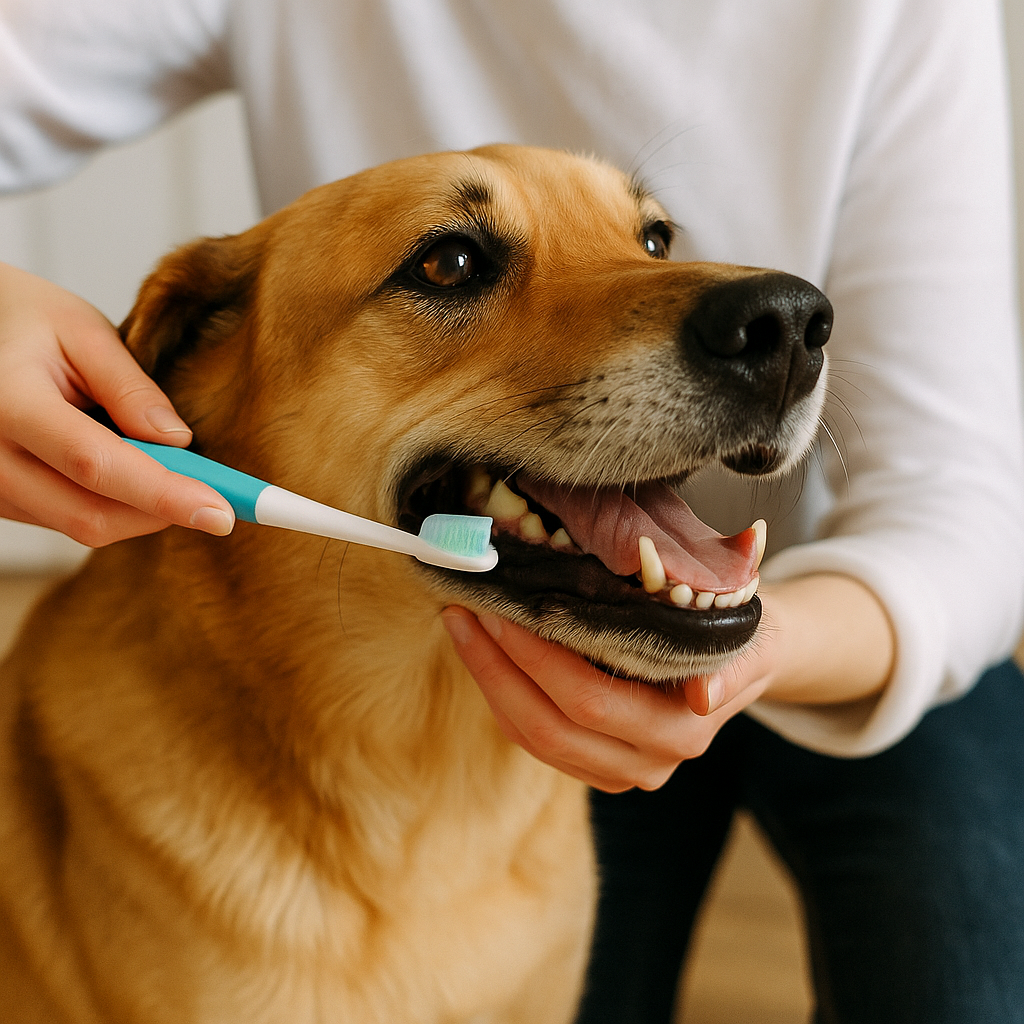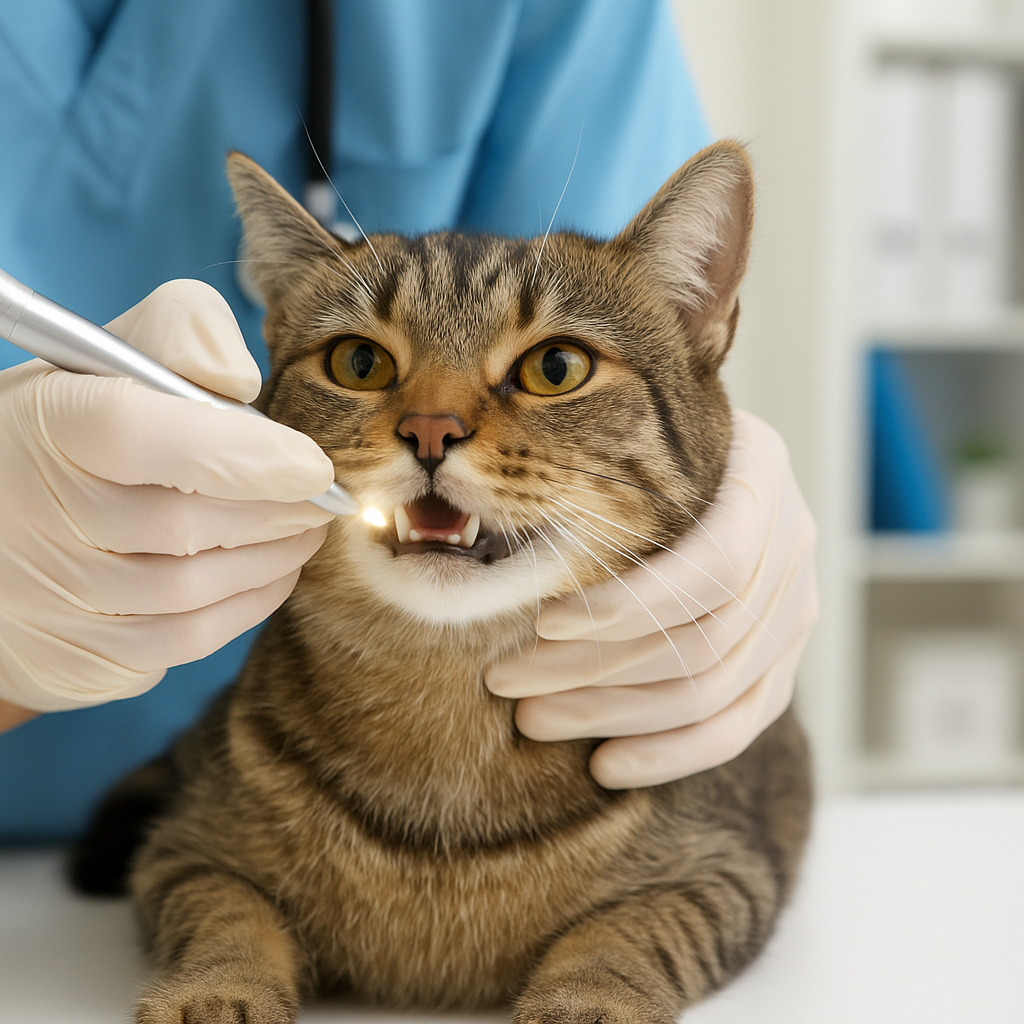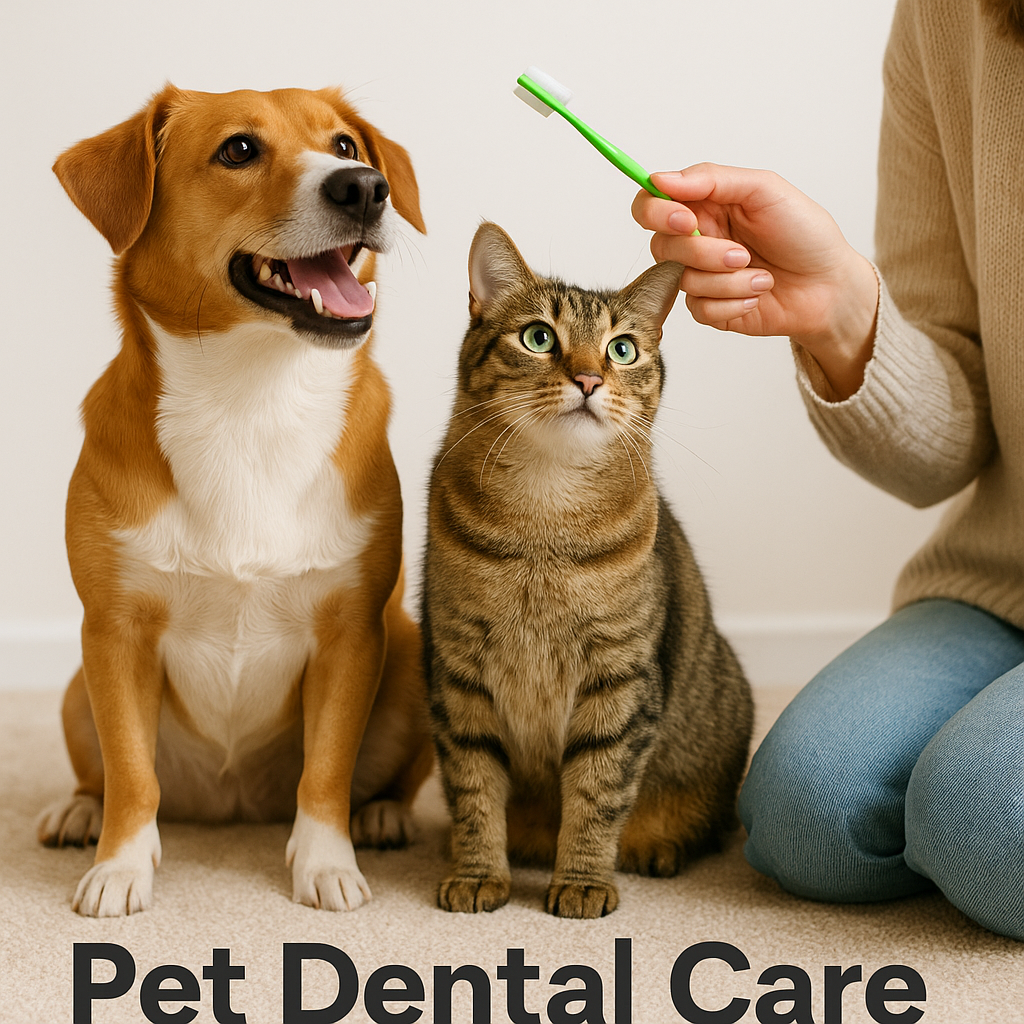Pet Dental Care: Why Oral Health Is Essential for Dogs and Cats
Introduction. When we think about pet health, we usually picture premium food, daily walks, enrichment toys, and routine vet visits. Yet one pillar often gets left behind—oral care. By age three, most dogs and cats already show signs of dental disease, and what starts as tartar and bad breath can progress into gum infection, loose teeth, pain, and even systemic illness. Oral bacteria don’t stay in the mouth; they can enter the bloodstream and affect the heart, liver, and kidneys. The good news? With consistent home care and periodic professional cleanings, dental disease is largely preventable. In this guide, you’ll learn why oral health matters, how to spot problems early, step‑by‑step home routines that actually work, and when to see your veterinarian. We’ll also link to related training and health resources across our site so you can build a complete wellness plan.

Why Pet Oral Health Matters
- Pain & behavior. Dental pain changes how pets eat, play, and behave; some become irritable or withdrawn.
- Whole‑body impact. Oral bacteria can seed inflammation elsewhere in the body, raising long‑term health risks.
- Quality of life & lifespan. Preventive care is far cheaper—and kinder—than treating advanced disease or extractions.
Building healthy habits pairs well with weight control and exercise. For a full wellness picture, see **Preventing Obesity in Pets: Diet & Exercise Tips**.
Common Dental Problems in Dogs
- Periodontal disease. Plaque hardens into tartar, inflaming gums and damaging bone. It’s the #1 dental issue in dogs.
- Fractured teeth. From chewing hard objects (bones, antlers, rocks) or trauma. Fractures expose nerves and hurt.
- Halitosis (bad breath). A red‑flag sign of infection, trapped food, or metabolic issues.
- Oral masses. Benign or malignant; early exams and dental X‑rays catch them sooner.
If your dog also scratches or has inflamed skin folds around the mouth, our guide **Common Dog Skin Problems & Solutions** can help you differentiate dermatologic from dental causes.
Common Dental Problems in Cats
- Tooth resorption. Painful breakdown of tooth structure; often needs extraction.
- Stomatitis. Severe immune‑mediated inflammation—intense pain, drooling, and refusal to eat.
- Gingivitis. Early gum inflammation; reversible with cleaning and home care.
Some cats groom less when the mouth hurts and then struggle with hairballs. If that sounds familiar, see **Cat Hairball Remedies: What Works Best**.
Spot the Signs Early
- Persistent bad breath, drooling, or blood‑tinged saliva
- Red, swollen, or receding gums; brown tartar along the gumline
- Dropping food, chewing on one side, or pawing at the mouth
- Facial swelling, behavior change, or reluctance to play tug/chew
Home Dental Care That Actually Works
Daily (or near‑daily) Brushing
Gold standard. Use a soft pet toothbrush or finger brush and a pet‑safe enzymatic toothpaste (never human toothpaste). Start slow—reward every micro‑step.
- Let your pet lick a pea‑sized smear of toothpaste from your finger.
- Touch the brush to the canine teeth for 2–3 seconds; reward.
- Gradually brush outer surfaces of the upper teeth in gentle circular motions.
- Build to 30–60 seconds per side; aim for at least 3–4 days/week.
Chews, Toys & Diet
- VOHC‑accepted chews. Look for Veterinary Oral Health Council (VOHC) acceptance on labels.
- Textured kibble or dental diets. Designed to reduce plaque/tartar mechanically and enzymatically.
- Smart enrichment. Food puzzles lengthen chewing time and reduce gulping.
Water Additives & Gels
Helpful add‑ons that reduce oral bacteria. Use as directed and pair with brushing for best results.
Training for Cooperative Care
Desensitize and counter‑condition: touch the muzzle → reward; lift the lip → reward; brief brush contact → reward. For calm, reward‑based methods, see **How to Stop Dog Barking: Effective Training Methods** and build the same positive‑reinforcement mindset.
Professional Veterinary Dental Care
- Annual oral exams. Many pets need professional cleanings every 6–18 months depending on breed, age, and home care.
- Dental cleaning under anesthesia. Allows scaling below the gumline and full‑mouth radiographs—critical steps you can’t do awake.
- Dental X‑rays. Reveal root disease, resorptive lesions (cats), and hidden fractures.
- Pain management. Extractions, if needed, are followed by analgesia and after‑care instructions.
Putting It Together: A Weekly Oral‑Care Routine
- Daily: brief brush + tiny reward; rotate VOHC chew on non‑brushing days.
- Twice weekly: check the gumline for redness; note breath changes.
- Monthly: lift lips and photo both sides to track tartar and gum health.
- Every 6–12 months: schedule a vet oral exam; plan cleanings as advised.
Oral care complements exercise and training. For building a balanced routine, see **Golden Retriever: Training & Exercise Tips** and our breed guides like **Siamese Cats: Personality, Care & Health** and **German Shepherd: Training, Temperament & Health**.
FAQ: Real‑World Questions from Pet Parents
How often should I brush my pet’s teeth?
Daily is ideal, but even 3–4 times per week markedly reduces plaque and gingivitis. Pair brushing with a tiny, high‑value treat so your pet looks forward to it.
Do dental chews replace brushing?
No. Chews and dental diets are helpful adjuncts but do not clean below the gumline. Brushing + periodic professional cleanings remain the foundation.
Is anesthesia‑free “cleaning” a good alternative?
It can improve appearance but can’t clean below the gumline or take radiographs—where most disease hides. For medical treatment, an anesthetized cleaning is the standard of care.
My pet hates brushing. What now?
Step back to easier wins: toothpaste lick → reward; touch brush to tooth → reward. Keep sessions under 60 seconds and end on success. If stress persists, ask your vet about gels, diets, and behavior plans. Cooperative‑care training principles are similar to those in **House Training Puppies: Step‑by‑Step Guide**—short, consistent, reward‑based sessions.

Conclusion
Healthy mouths make happier pets. With small daily habits—gentle brushing, VOHC‑accepted chews, and routine exams—you can prevent painful disease, protect whole‑body health, and add quality years to your companion’s life. Start tiny, stay consistent, and celebrate progress. If you’re building a full wellness plan, pair this dental routine with weight control and activity from **Preventing Obesity in Pets**, and keep behavior calm with reward‑based training from **How to Stop Dog Barking**. Your pet’s bright eyes—and fresh breath—will thank you.


핑백: Pet Vaccines: Essential Guide for Dogs&Cats